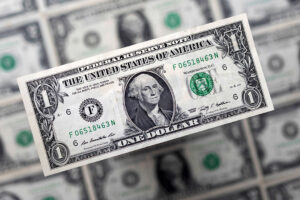THE PHILIPPINES’ external debt service burden rose to nearly $5 billion at end-April due to higher amortization payments, preliminary data from the Bangko Sentral ng Pilipinas (BSP) showed.
Preliminary data from the central bank showed debt servicing on external borrowings went up by 1.3% to $4.91 billion in the January-April period from $4.85 billion a year ago.
Broken down, amortization payments increased by 6.2% to $2.42 billion in the first four months from $2.28 billion in the same period in 2024.
On the other hand, interest payments declined by 3% year on year to $2.49 billion from $2.57 billion.
The debt service burden represents principal and interest payments after rescheduling, according to the BSP.
This includes principal and interest payments on fixed medium- and long-term credits, including International Monetary Fund credits, loans covered by the Paris Club and commercial banks’ rescheduling, and New Money Facilities.
It also covers interest payments on fixed and revolving short-term liabilities of banks and nonbanks.
However, the debt service burden data exclude prepayments on future years’ maturities of foreign loans and principal payments on fixed and revolving short-term liabilities of banks and nonbanks.
“The slight year-on-year increase in external debt service may partly reflect the wider budget deficits that needed more NG (National Government) borrowings,” Rizal Commercial Banking Corp. Chief Economist Michael L. Ricafort said in a Viber message.
The NG’s budget deficit widened by 29.41% to P523.9 billion in the January-May period from the P404.8-billion gap last year.
Mr. Ricafort also cited “still relatively higher Fed interest rates since 2022 that contributed to higher debt servicing costs.”
The Fed is expected to keep its benchmark rate steady in the 4.25%-4.5% range at its July 29-30 meeting, a level policymakers regard as at least moderately restrictive, Reuters reported.
The Fed last cut rates in December, when policymakers started assessing the possible impact on prices from the import tariffs that Mr. Trump quickly began imposing after returning to the White House in January.
“For the coming months, the share of foreign borrowings in the total borrowing mix has been reduced in view of forex (foreign exchange) risks entailed, with a greater share of domestic borrowings. Nevertheless, future borrowings would be a function of the trend on budget deficits,” Mr. Ricafort said.
From this year until 2027, the National Government plans to source at least 80% of its borrowing program from domestic sources, and 20% from foreign lenders. The government previously adopted a 75:25 borrowing mix.
Earlier BSP data showed outstanding external debt jumped by 14% to $146.74 billion at the end of March. This brought the external debt as a percentage of gross domestic product (GDP) to 31.5% from 29.8% in the fourth quarter.
The BSP’s external debt data cover borrowings of Philippine residents from nonresident creditors, regardless of sector, maturity, creditor type, debt instruments or currency denomination.
Meanwhile, the debt burden as a share of GDP stood at 2.8% in the first quarter, lower than the 3.1% in the year-ago period. — Luisa Maria Jacinta C. Jocson with Reuters
